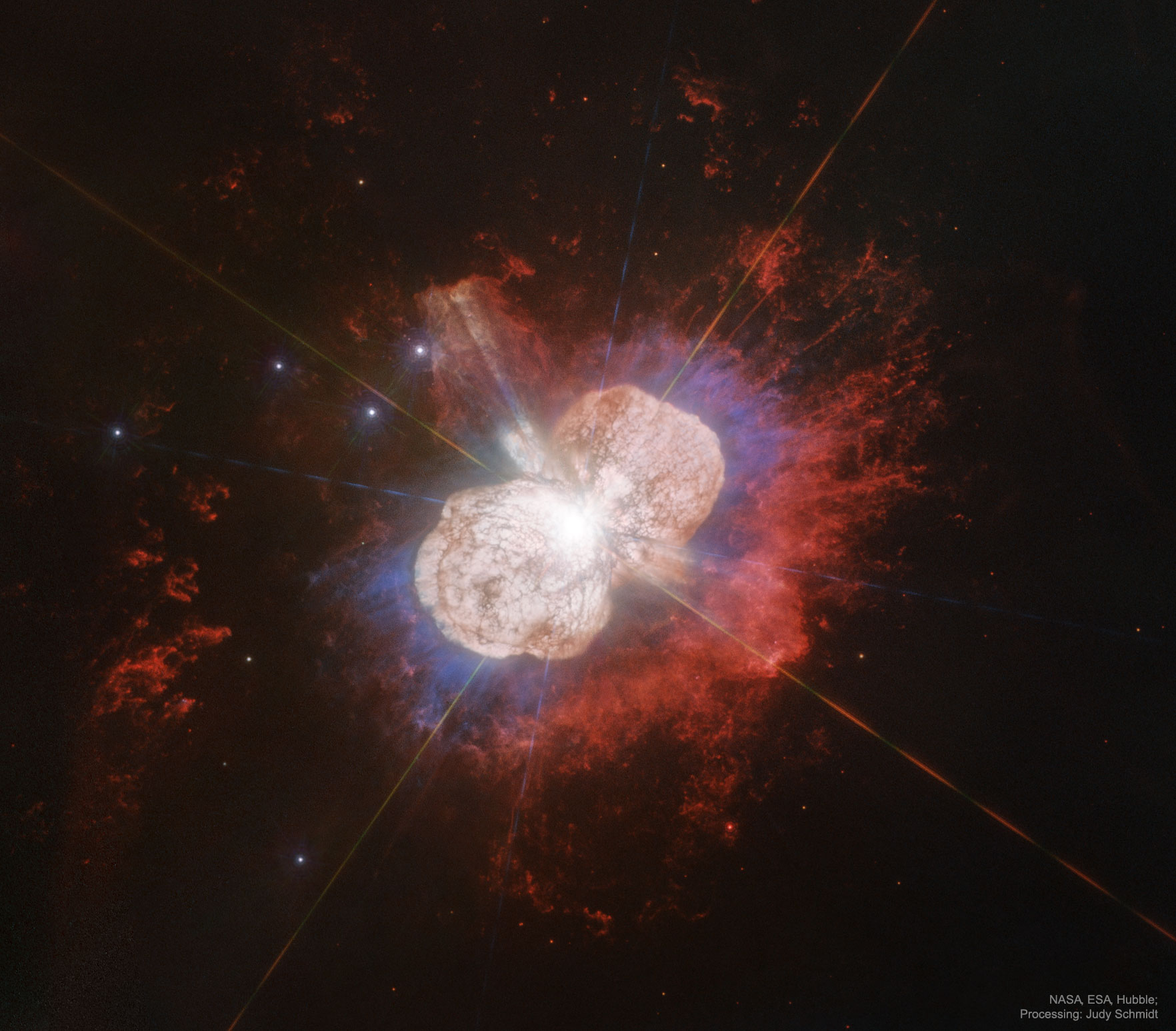Eta Carinae, while a definite supernova candidate is 7500 lightyear away from us. It will be nice and bright, but I'm more hopeful we'll get to see Betelgeuse go supernova. 500 light years away, and it will be as bright as the moon for months.
SpacePics
A community dedicated to sharing high quality images of space and the cosmos
Rules:
-
Include some context in the title (such as the name of the astronomical object or location where it was photographed)
-
Only images, pictures, collages, albums, and gifs are allowed. Please link images from high quality sources (Imgur, NASA, ESA, Flickr, 500px , etc.) Videos, interactive images/websites, memes, and articles are not allowed
-
Only submit images related to space. This may include pictures of space, artwork of space, photoshopped images of space, simulations, artist's depictions, satellite images of Earth, or other related images
-
Be civil to one another
If the cosmos is going to give me any visible supernovae in my lifetime I'll be happy, but yeah Betelgeuse would be incredible
Wow amazing. Thank you
Sometimes I stare at it for a while hoping it'll blow while I'm looking.
A half hour while you watch is about as likely as any other half hour, I think - the chance will increase over time, but not on human lifescales.
Supernova core collapse is about a quarter of the speed of light, and Betelgeuse reaches out to about Jupiter's orbit, which is about three-quarters of a light hour away from the sun? So we'd expect the core collapse take about three hours. Might need an astrophysicist to correct me - if it's half the diameter, then the volume will have reduced eight times and the visible circle four times, so the heat should have doubled and it'll be much brighter? Might be able to get an early warning on that; telescopes will be much more sensitive than our eyes, so we'll know to drag a chair outside and keep our eyes on Orion.
I think they used to do this, but Betelgeuse has these weird periods where it changes its form rather rapidly. I would have to look into it again, but I think they decided that transition between fusion cycles isn't static (H-He -> CNO and back sort of thing)
I did not know that there were natural laser light sources. Amazing!
I thought it looks off but on the second look it kinda looks like an flare. Or maybe it's an image artifact?
